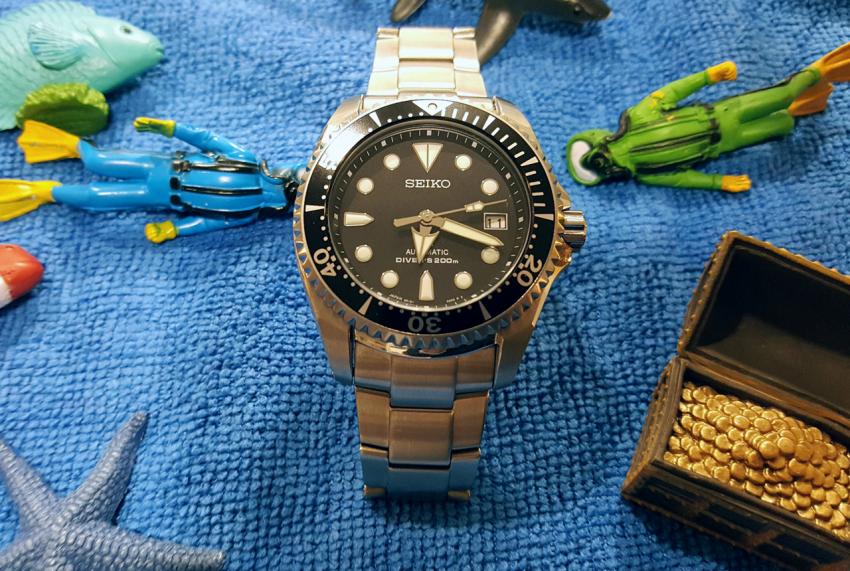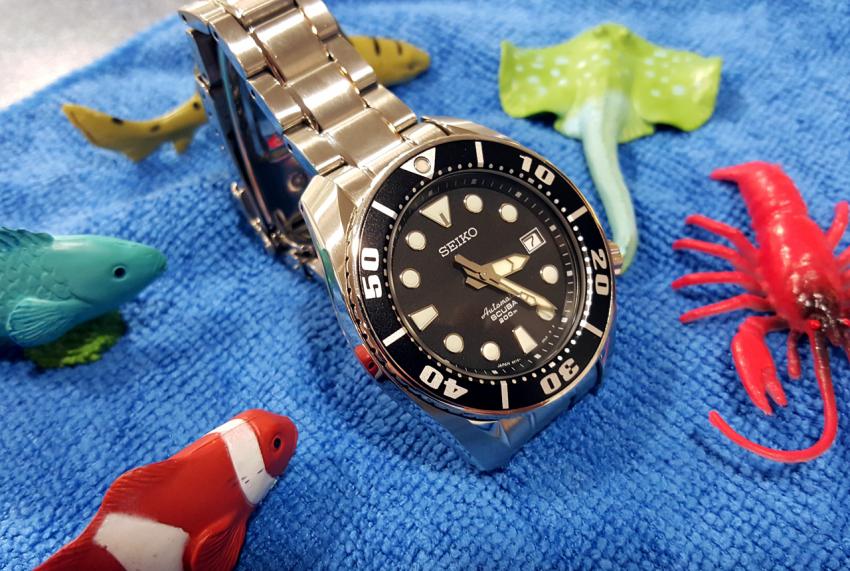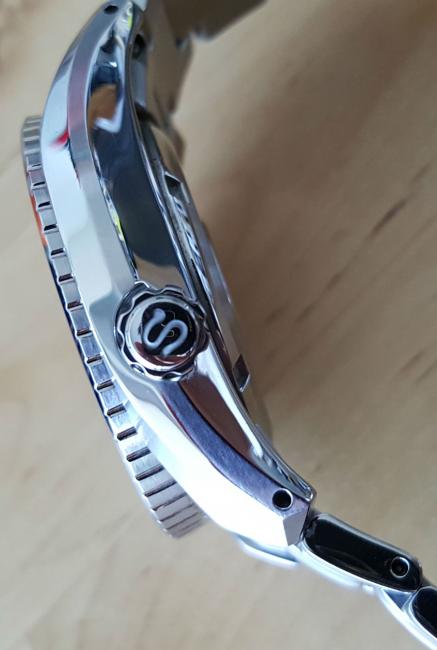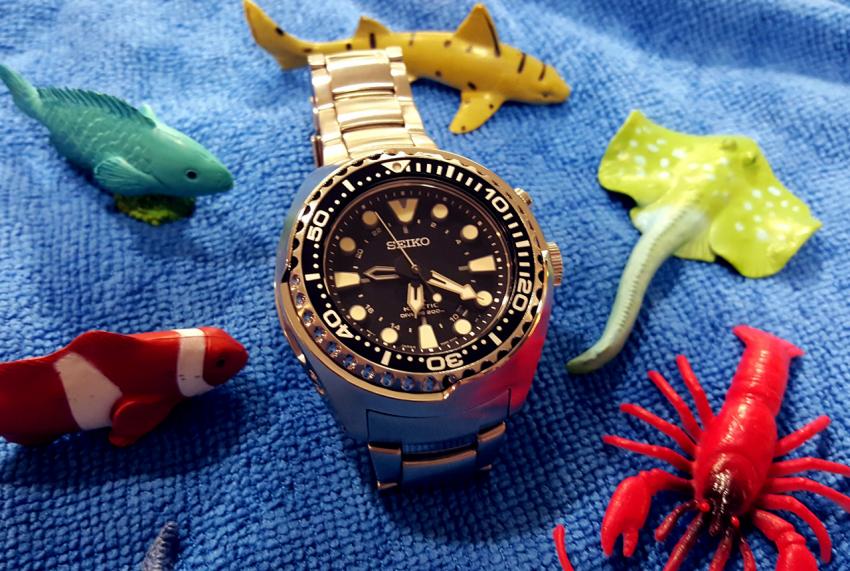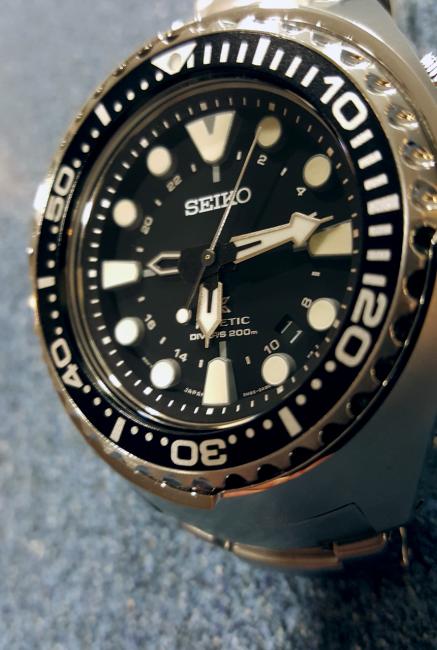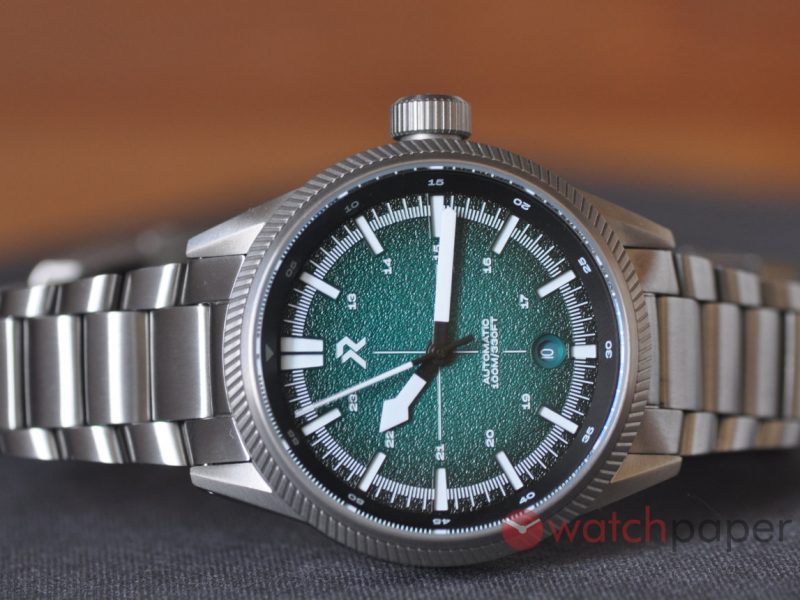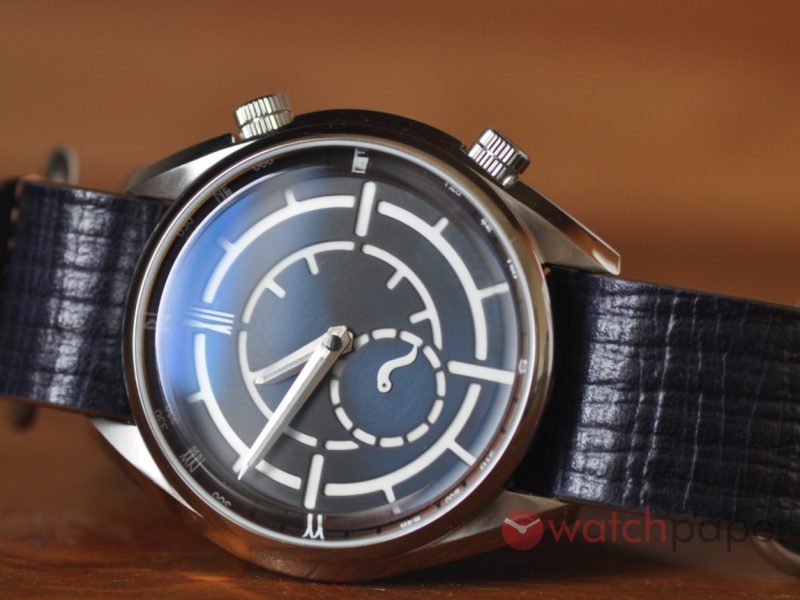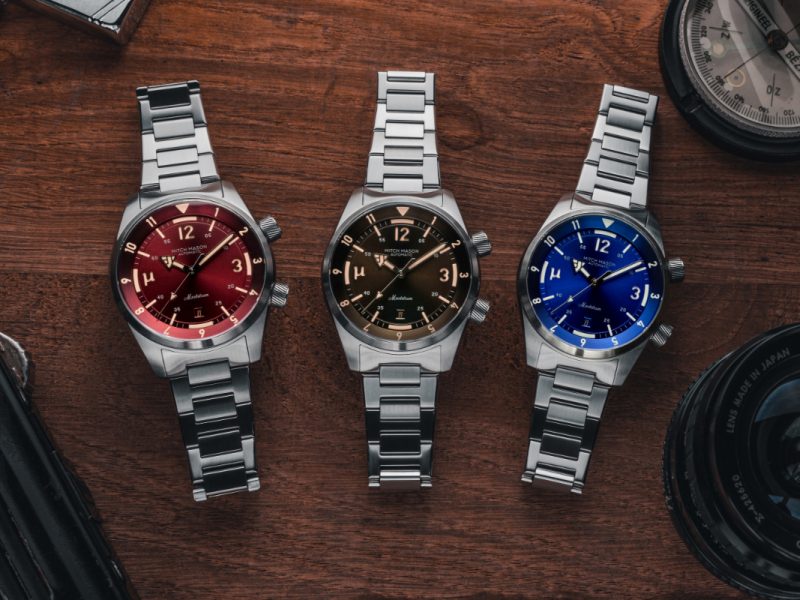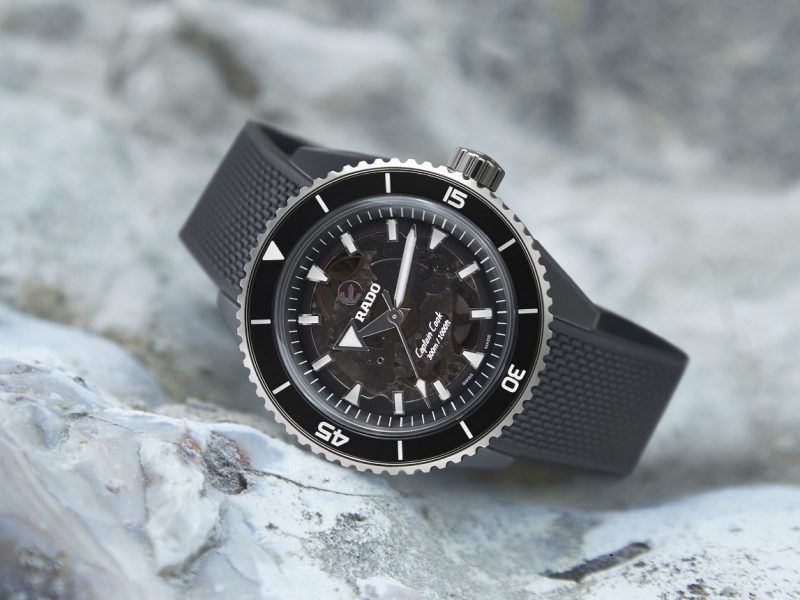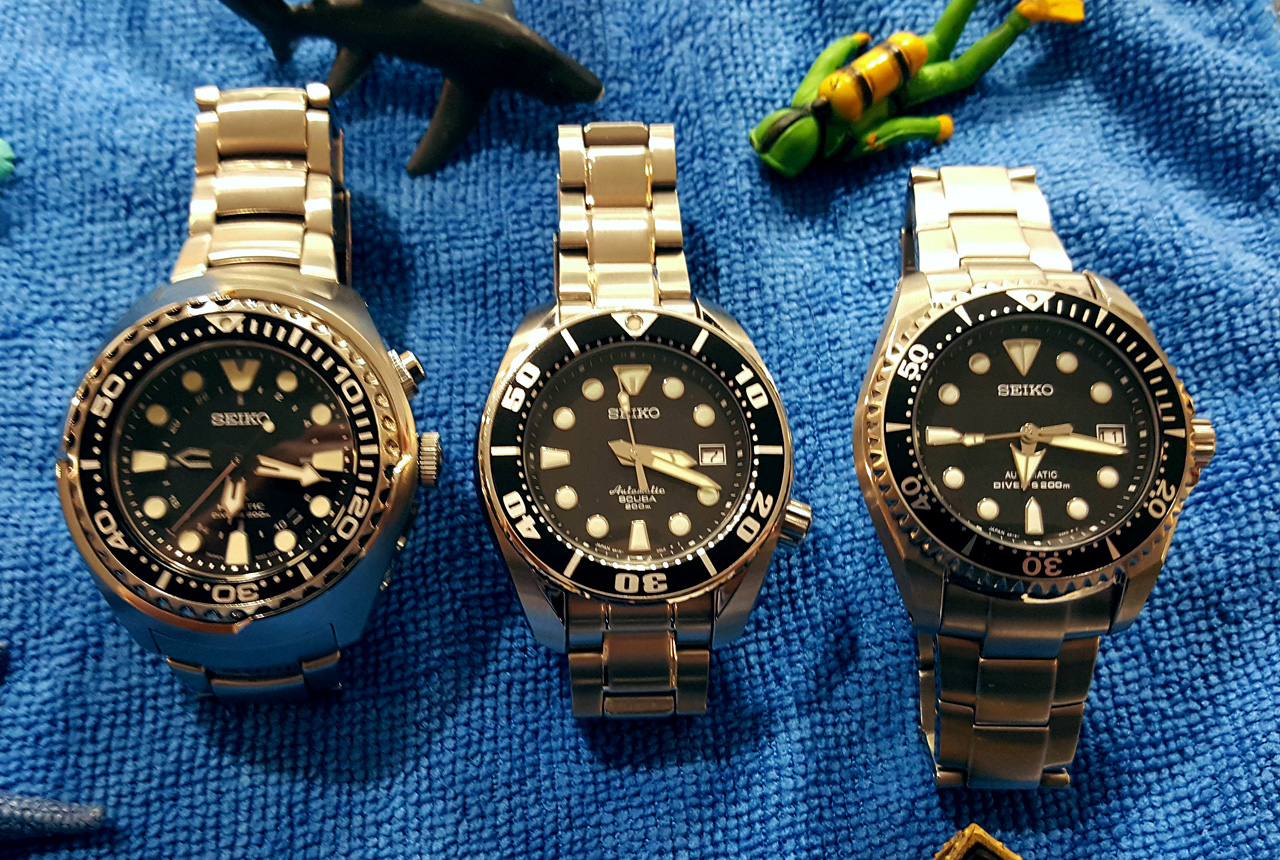
Head to Head to Head: Three Divers from Seiko
Seiko’s history with diving watches, while not as pioneering chronologically as JLC, Rolex, or even Omega, fears no brand in the innovation department. Seiko wasn’t first to the party but when they arrived in the mid-1960s, their impact was significant and permanent. Amongst large, iconic, Swiss brands there are very few that, today, you would want to take out in a light spring rain shower let alone on an actual dive to check out marine life beneath the waves. Not so with a Seiko diver. That 10k+ JLC Master Compressor you spent a very long time saving for? Can you imagine using it to time that visit to the coral reef, emerging from the waves after using it to measure your ascent, and then hosing it down with fresh water to protect the case? No. Why? Because you don’t dive. If, like me, a swim for you means a few laps of a hotel pool followed by some heavy breathing, then diver’s watches remain aspirational statements more than practical, life-saving tools. But sometimes looking the part is the entire point. That you can actually take these Seikos to a depth of 200 metres and theoretically not damage them is a specification detail, like bph or lug width, that’s important but secondary to the statement you are trying to make by wearing the watch. The exact nature of that statement is another article unto itself and depends on your own preferences, but tool watches as a category let you vicariously partake in a tradition of practicality and rough readiness and (sometimes loudly) signal that you are good to go too.
The three examples of Seiko diver’s watches in this comparison (the SBDC029/007, SBDC001, and the SUN019) are a small selection from the company’s vast array of tool watches but represent distinctive aesthetic choices within that large selection. From the more traditionally styled SBDC029/007 to the beloved Sumo, to the outrageous SUN019 kinetic tuna, each of these watches sends a different message about the wearer (or the wearer’s mood). As always with Seiko, they also offer outstanding value at a price point well below that of other iconic, Swiss-based, brands. Conspicuous by their absence are the SKX007 and the SBBN(x) models. Classics, but the difficulty with Seiko – even in a seemingly narrow category – is the range of choice. One comparison piece can’t do the entire range justice…and this author’s resources are limited.
Shogun
The SBDC029/007, or “Shogun,” is the most conservative of the three watches. Its case measures 44mm without the crown, has a lug to lug length of 50.75mm, a lug width of 22mm and sits 13.3mm tall. It is powered by the 6R15 automatic movement, which has a hacking seconds feature and 50-hour power reserve. In my experience with the watch so far, it has never been more that 3 seconds off over 24 hours and actually improved somewhat with regular wear. The most important numbers for the Shogun, however, are its weight and its price, and they are related statistics. The Shogun is made of titanium with diashield coating and weighs in at a slight 105 grams. If you equate weight with quality (and people do), this may be an issue for you. The Shogun feels less substantial on the wrist and it’s a matter of personal preference as to whether you think this is an advantage or makes the piece feel toy-like. No matter how you frame it, the titanium adds considerably to the cost (~$1100 CDN, which is a moving target now that our dollar is in decline) because what titanium gives you in strength and lightness, it takes away in being difficult to mill and scratch-prone. Seiko addresses the softness of titanium with its diashield coating which is, by reputation, miraculous. I haven’t tested the Shogun’s scratch-resistance at the limit but observed that the coating is better on the exterior of the bracelet after a ham-fingered attempt to remove some links left minor scratches on its interior. Of the three divers, the Shogun’s somewhat conventional styling makes it the most versatile to wear. Not too bulky, it can co-exist with a cuffed shirt and doesn’t look out of place at the office – a quality that can’t be attributed to the Sumo or Kinetic Tuna. With its Seiko Monster-sourced hands and chiseled bevel, the Shogun is the most refined of the three watches and the most classically beautiful. If you want a tool watch that can hold its own against other, much more expensive pieces like the Rolex Submariner, the Shogun should be on your short list.
Sumo
It’s strange to label Seiko’s SBDC001 the middle ground watch in this comparison, but that’s only because I’ve placed it in a lineup that includes such extremes at either end. The Sumo has roughly the same dimensions as the Shogun (44.5mm case without the crown, a lug-to-lug measurement of 52.1mm, lug width of 20mm, a height of 13.5mm) but feels and wears larger on the wrist because of its weight (almost double that of the Shogun), flatter bezel and the less discrete font used on it for the minute markers.
It has been justly praised for the sculptural qualities of its superb case, which employs a semi-shrouded design that gives you access to the coin-edge bezel at 12 and 6 o’clock for minute-timing. It’s powered by the same 6R15 movement as the Shogun and is officially rated at between +25/-15 seconds per day, which might be decimal place error or Seiko hedging its bets on accuracy because with both the Sumo and the Shogun I might experience this kind of variance over the course of a week, not a day. The 6R15 is a movement with impressive real-world tolerances. The Sumo’s winding action is smooth and solid, (in contrast to the slightly gritty feel of the Shogun’s crown rotation) and the crown’s reassuring weight, as you screw it down, speaks to the outstanding build quality of the case and movement. I confine the praise to the case because the real weakness of the Sumo, as noted by many, is its bracelet. The clasp is made of lightly-stamped steel and doesn’t feel up to the job despite having a diver’s extension. The real crime is aesthetic. At 20mm wide, the bracelet looks inadequate compared to the superior achievement of the Sumo’s case – like securing a load of luggage to the roof of your car with a piece of string. Luckily, there are plenty of options available if you wanted to source a better-looking, more solid feeling alternative. The Sumo, at between $600-$700 CDN still represents an excellent value at this price point. It’s an iconic piece that until recently was only officially available to the Japanese market and, with its more extensive use of Seiko’s signature design cues, feels somewhat more a part of the family than the Shogun.
Kinetic Tuna
Over the holidays, the WatchPaper team playfully nominated “Get Lost!” watches. (“Get Lost” wasn’t what we called them when we started, but we have standards around profanity here.) The usual suspects appeared on the list (G-Shocks, Hublots, Devons, and the odd Richard Mille were nominated) but I hadn’t put the Kinetic Tuna on my wrist at that point, otherwise, it would have been my first choice. If watches had a volume setting, the SUN019 would start at 11 and carry on from there. Everything about the watch is set at maximum. Its provisional nickname (people don’t agree on what to call it) recalls the tuna-can shape of Seiko’s SBBN series of shrouded diving watches (which have a long history with Seiko starting with the 6165-7010) and ups the game with a brushed stainless steel case that flares outward from the bezel, adding considerable visual impact and physical heft to the watch. The case measures 47.5mm wide, 52mm long, rises a full 16mm in height, and tips the scales at around 230 grams. Holding it in your hand, you might quickly dismiss it as an improbably large and ponderous watch, but on the wrist, looking straight down at the watch’s dial, the enormous dimensions are diminished somewhat and you realize that they serve a specific aesthetic purpose. The towering height of the Kinetic Tuna allows for a dial that’s stunning in its three-dimensionality.
The raised hour indices sit obelisk-like on the deeply set face and telling the time feels like you are looking deep into the inner workings of the watch itself. The Kinetic Tuna is the only one of the three divers that does not boast an automatic movement and is instead a hybrid, with a rotor charging a quartz battery. At full charge, the watch will run for 6 months, but as it gets low, the watch will warn you by having the second hand start to jump in two-second intervals. As expected, the movement delivers quartz-like levels of accuracy, where variance is measured in seconds per month. At almost $800 CDN brand new, it’s not inexpensive, but savvy shoppers can find it for less online. The Kinetic Tuna is a beast, but if maximal tool-watch readiness is the signal you want to send, its solid, industrial, design and commanding wrist presence sends the message in a most the most unmistakable way possible.
For more information, visit: http://www.seikocan.com/!/en/prospex-en/


